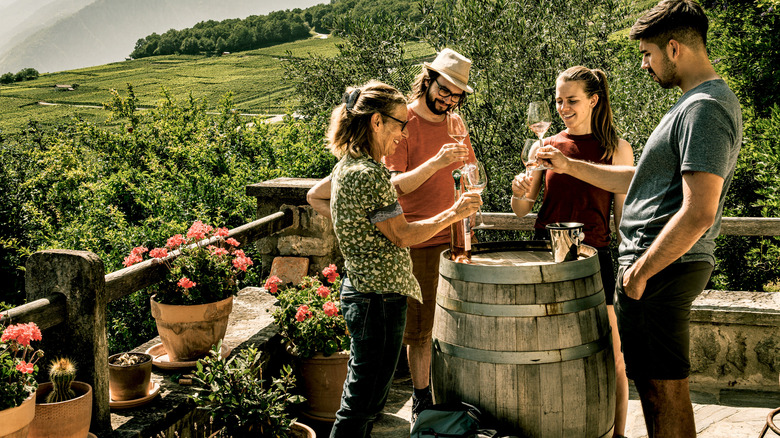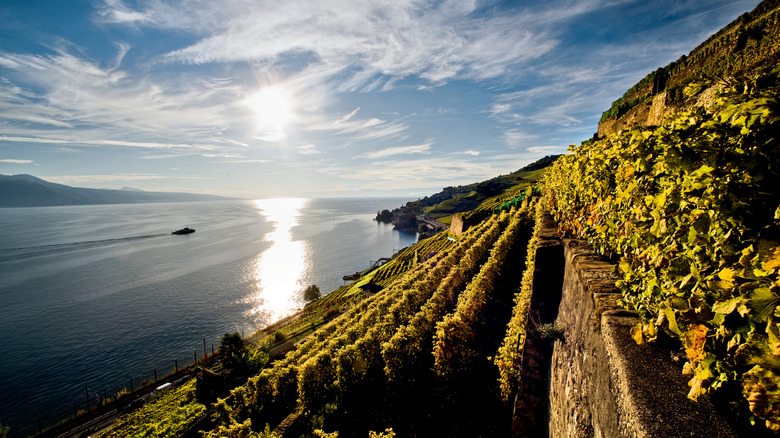Here's Why You'll Rarely Find Swiss Wine In The US
If you're among the few people outside of Switzerland to sample Swiss wine, consider yourself lucky. While Switzerland is known for its wine — the enchanting terraced vineyards of Lavaux overlooking Lake Geneva are a UNESCO World Heritage Site — the Swiss rarely share their wines outside the country. Still, with little fanfare over the last three or four decades, Swiss wines have consistently risen in the ranks of world-class vintages, quietly earning top status.
In 2023, Robert Parker Wine Advocate, a foremost authority on wines worldwide, awarded Grain by Grain Petite Arvine 2020 its maximum score of 100 points. The sweet white wine produced by Domaine Marie-Thérèse Chappaz in Switzerland's Valais region was among 27 Swiss wines to earn Parker's "Extraordinary" status, which is granted only to vintages that tally in excess of 95 points on his scale.
So, what's the issue? For one thing, Switzerland only produces about 1 million hectoliters (approximately 27 million gallons) of wine annually. That's about 5% of California's yearly wine production. If you really want to get up close and personal with the numbers, that amounts to nearly 700 million glasses of wine produced each year in a country where the adult population is around 6 million. Get the picture? It's really good wine, but there just isn't enough to share with the rest of the world. In fact, Switzerland exports less than 2% of its wine annually, which begs the question: How do we get our hands on a bottle?
Good things come to those who wait
The life of a Swiss winemaker must be as frustrating as it is rewarding. The age-old tradition passed through generations is yielding world-class wines, but most of the world has no idea what they're missing and Switzerland remains an underrated wine region. Prior to the 1990s, Swiss vintners operated independent of oversight. The result was an excess production of mediocre wine — so much so that winemakers were dumping unsold wine into empty swimming pools. That changed when Switzerland began overseeing wine production under AOC regulations, establishing territories, requiring training, and stipulating production standards.
Gradually, wine lovers took notice, but visitors to Switzerland were nonplussed to discover it was nigh impossible to find their favorite Swiss wine at home. This growing international interest in hard-to-find Swiss wine spawned a subculture of wine tourism, which includes guided tours, hiking and cycling routes through vineyards, and tasting rooms in vintners' private homes. Lavaux (pictured) — a UNESCO World Heritage Site — debuted a wine train connecting Vevey on the shores of Lake Geneva to Chexbres, a village in the heart of the terraced vineyards.
More recently, industry watchers have noticed a new phenomenon as importers begin to introduce Swiss wines to their portfolios. While limited Swiss wines are understandably expensive, importers are confident that there's a solid U.S. market. Victoria James, corporate beverage director for Gracious Hospitality, seconds that, telling SevenFifty Daily, "We're talking about this amazing country squeezed in between France, Italy, and Germany. If you're a sommelier and you're not paying attention to Switzerland, then what the hell are you doing?"

